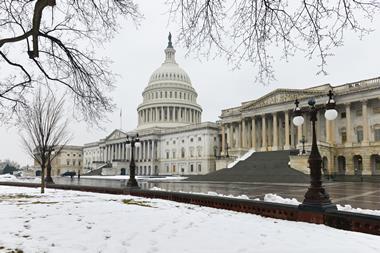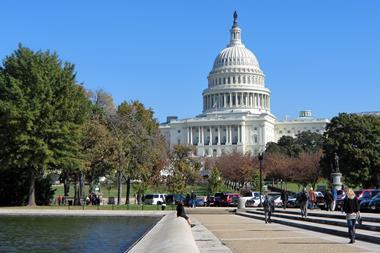The compromise that allowed the government to reopen is still worrying the nation’s research community
A brief US government shutdown, which would have been disastrous for the nation’s science agencies and their grantees had it dragged on, ended after three days when Republicans and Democrats reached an agreement. However, the compromise that resolved the standoff still worries researchers and science advocates.
In order to reopen the government, Congress passed – and President Trump signed – a continuing resolution (CR) to keep agencies running in 2018 at the previous year’s funding levels. However, the measure expires on 8 February. By that deadline, lawmakers will have to either pass another short-term CR, or pass a final budget for the rest of 2018.
‘This is no way to run a country,’ says Glenn Ruskin, spokesman for the American Chemical Society. ‘These fits and starts disrupt the research and development enterprise, and chemistry is a key component of that enterprise – when you shut something down even just for several days the costs incurred to start that back up are sometimes very high,’ he adds, arguing that such funds would be better spent on scientific research.
‘With the CR, it’s like you are looking out the windshield of the car and can only see down to the end of the street, but certainly not where you want to be at the end of the fiscal year,’ Ruskin tells Chemistry World. ‘That affects research grant funding and long-term strategic planning – it’s basically just living for the moment and covering what is most immediately on the radar screen.’
Matt Hourihan, who directs budget and policy programmes at the American Association for the Advancement of Science (AAAS), emphasises that funding stability and predictability are crucial for federal research agencies because science is a long-term activity. ‘CRs are not an optimal way to fund government, and not an optimal way to fund science,’ Hourihan states, noting that this prevents research agencies from initiating new projects.
Hands tied
Jennifer Poulakidas, vice president for congressional and governmental affairs at the Association for Public and Land-grant Universities, agrees. ‘Sadly, by its nature a CR means that there is indecision by Congress and therefore science agencies cannot move forward with plans that they have for this fiscal year,’ she tells Chemistry World. ’Their hands are tied – the unknown continues, which means that […] the agencies have to hold back and be conservative in their funding decisions because they don’t know what the end result is going to be.’
Adding insult to injury is the fact that some of the 2018 funding bills introduced and under consideration in Congress actually contain extra money for key research agencies. ‘These bills have been written to demonstrate that Congress wants to give science agencies increases, but the agencies can’t do anything about that,’ Poulakidas says.
Ben Corb, a spokesman for the American Society of Biochemistry and Molecular Biology, is also worried. ‘A CR just isn’t a winning strategy,’ he says. ‘It is better than a shutdown, but we really do need to start taking action and finish the 2018 appropriations,’ he adds. Corb notes that research grants at agencies like the National Institutes of Health are already losing 10% off the top because they have been operating under a CR situation since the fiscal year started. ‘We may end up doing this all over again come 9 February,’ he says.
Science groups like the AAAS are now urging Congress to find a way to fund the government for the rest of 2018. They are also pressing lawmakers to raise the current budget caps for discretionary spending, which funds the majority of federal research and development.
‘Right now, it is an impossible mathematical exercise to write a bill that will pass both chambers of Congress with the current budget caps,’ says Poulakidas. ‘We need Congress to come to a bipartisan budget deal that increases the caps.’
Meanwhile, funding pressures continue as the Trump administration’s budget request for 2019 is due in mid-February.












No comments yet